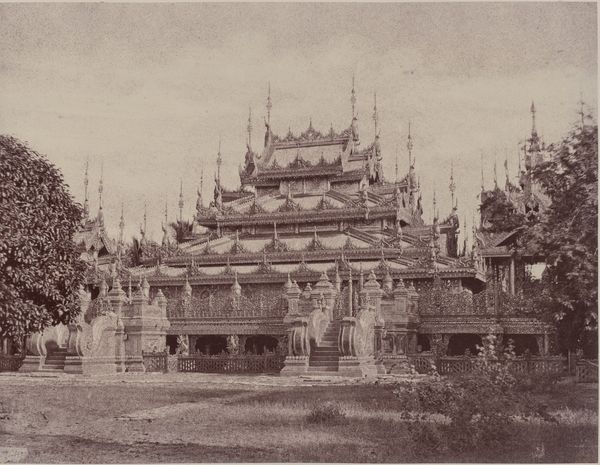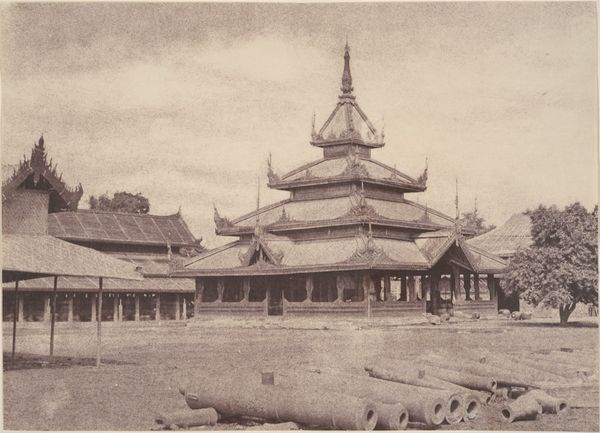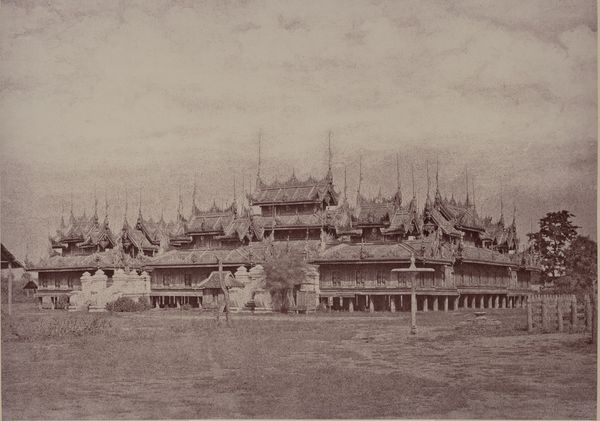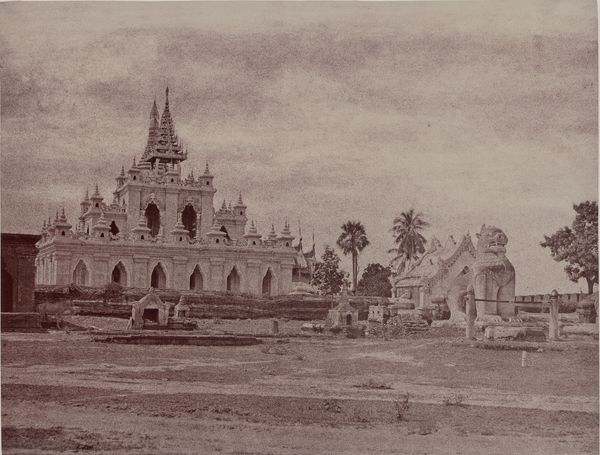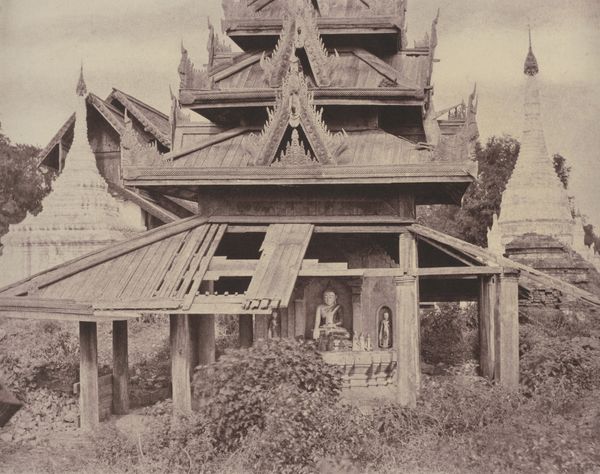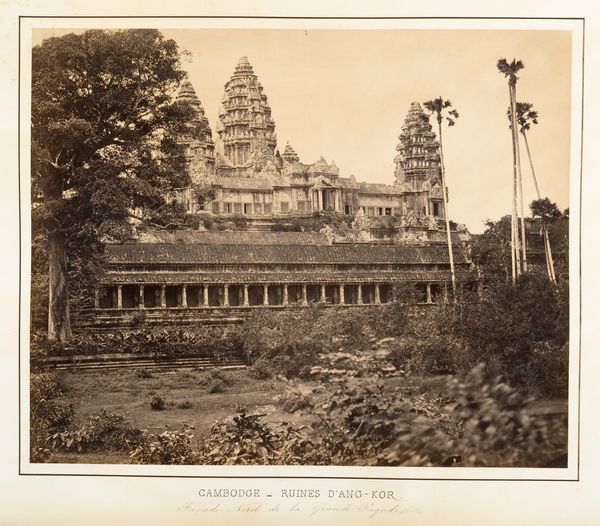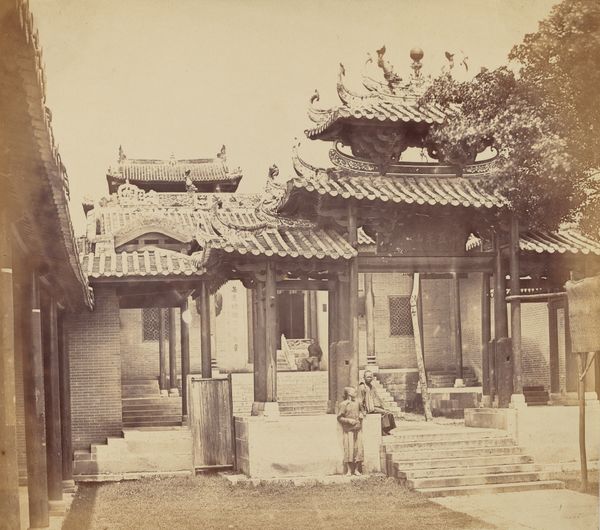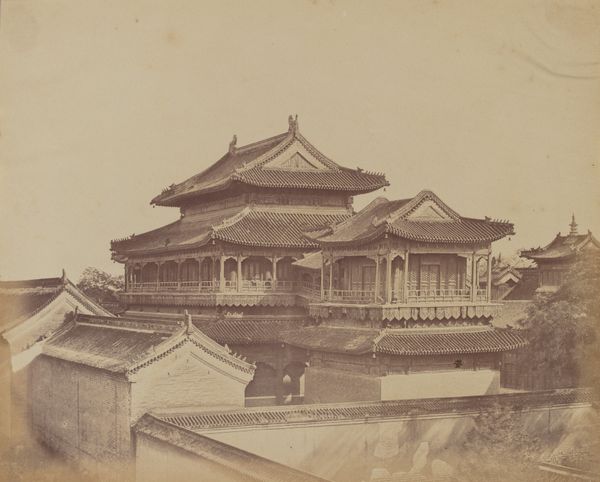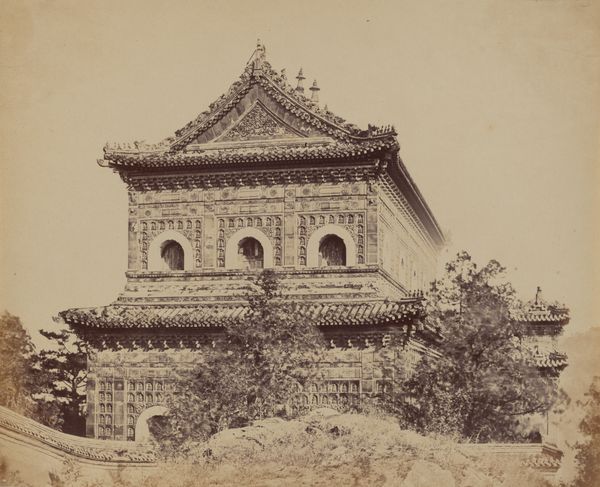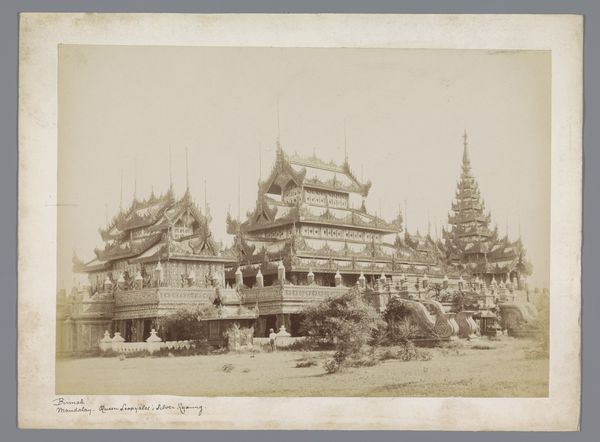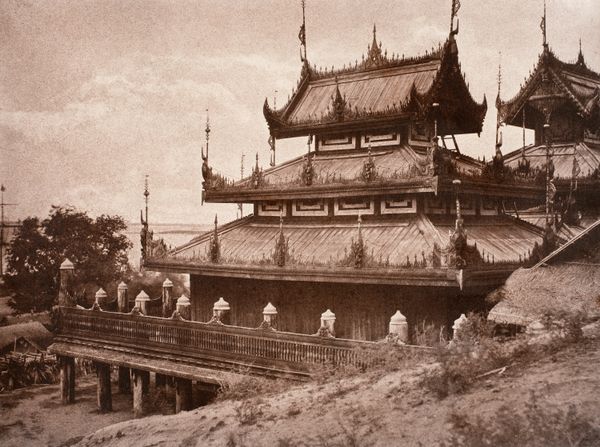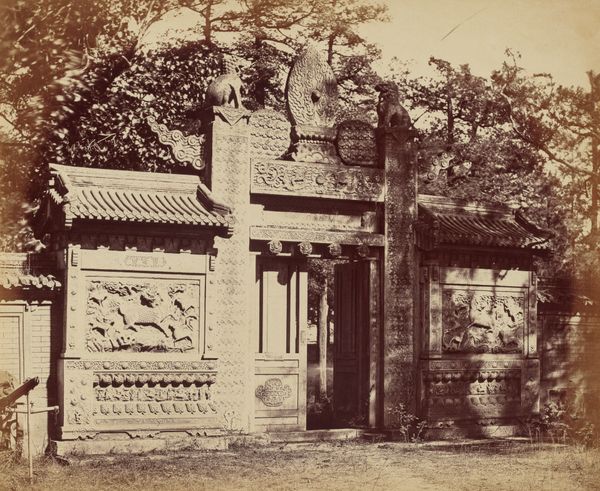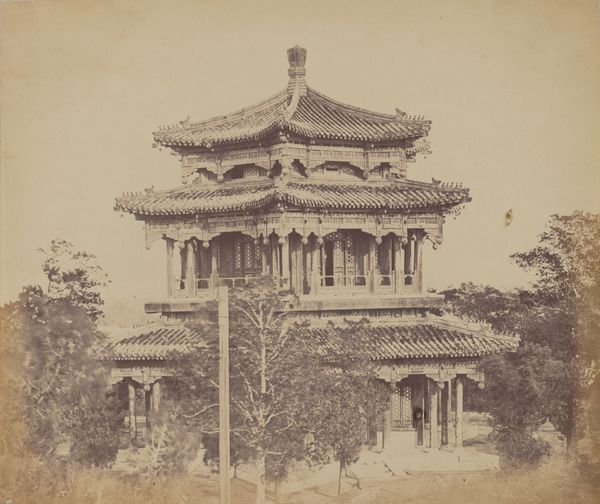
photography, site-specific
#
asian-art
#
landscape
#
photography
#
site-specific
Dimensions: image: 25.1 × 34.2 cm (9 7/8 × 13 7/16 in.) mount: 45.6 × 58.3 cm (17 15/16 × 22 15/16 in.)
Copyright: National Gallery of Art: CC0 1.0
Editor: This is Linnaeus Tripe's photograph, "Amerapoora: Pyee-dyk Kyoung," taken around 1855. The sepia tones and the somewhat hazy light lend a dreamlike quality to the architecture. What strikes you most about its formal construction? Curator: Immediately, the interplay of horizontal and vertical lines captures my attention. Note how the receding horizontals of the temple roofs and the bordering fence guide the viewer's eye, countered by the assertive verticality of the spires and surrounding foliage. How does this arrangement influence your perception of depth within the composition? Editor: I suppose it flattens the space a bit. It's like the artist is presenting a stage. Curator: Precisely. The image consciously avoids deep perspective. Furthermore, examine the repetition of forms: the tiered roofs, the balustrades along the fence, and even the placement of trees. This echo reinforces the photograph’s symmetrical balance, yet it avoids being entirely static due to subtle variations in texture and lighting. Is there anything that appears deliberately ambiguous? Editor: Perhaps the location of the temple within the broader landscape? It's neither completely integrated nor entirely isolated. Curator: An astute observation. This deliberate ambiguity regarding spatial relationships further contributes to the photograph's intriguing compositional structure. How does this impact your overall engagement with the piece? Editor: I think it draws my attention towards the architectural details. Thank you! Now I can appreciate how line, texture and light become the means of defining this work's structural space. Curator: My pleasure. And it also demonstrates how closely attending to structural elements unlocks so much of the image's aesthetic intention.
Comments
No comments
Be the first to comment and join the conversation on the ultimate creative platform.
